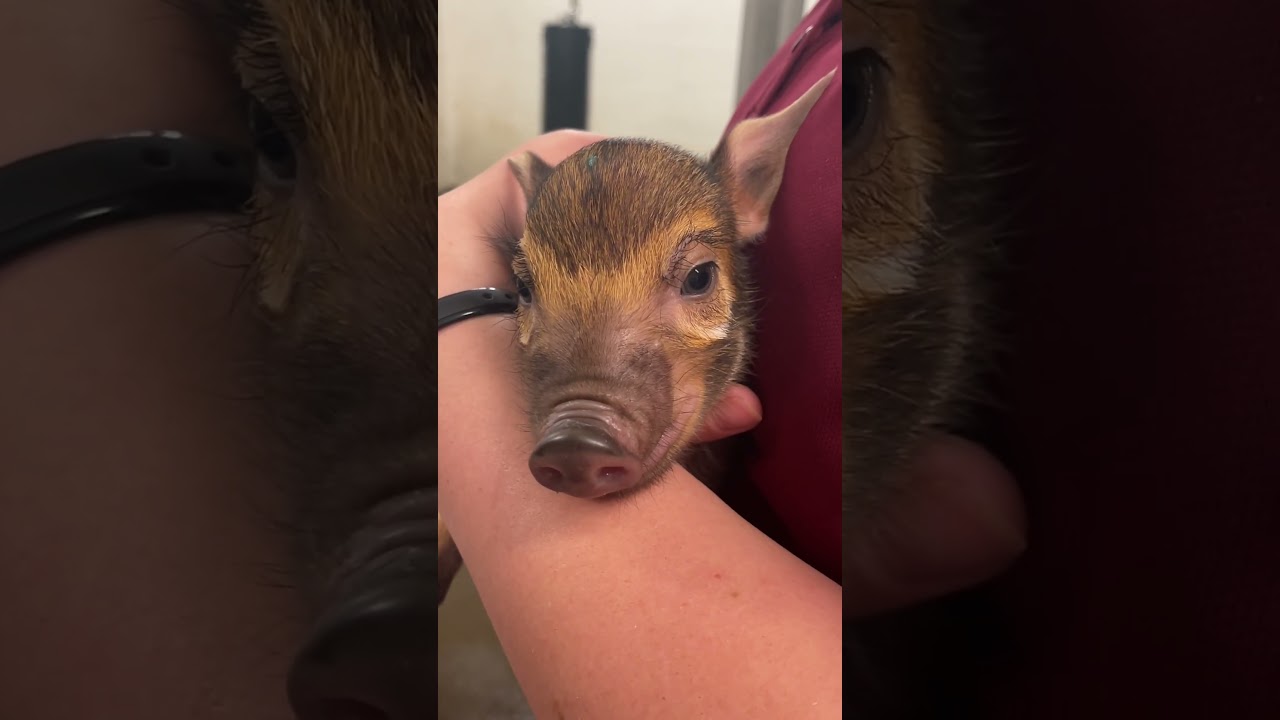– The significance of weigh-ins for red river hog piglets in zoos
– Insights into the biology and conservation of the Red River hog
– The role of zoos in wildlife conservation and education
– Challenges in the care and management of red river hogs in captivity
– The impact of zoo breeding programs on endangered species preservation
Weighing red river hog piglets is a vital aspect of their care and management within zoological settings. This seemingly simple procedure plays a critical role in monitoring the health and growth of these captivating creatures, providing zookeepers and veterinarians with essential data to make informed decisions about their diet, medical care, and overall welfare.
Red river hogs, scientifically known as Potamochoerus porcus, are fascinating members of the pig family found in the forests and wetlands of Western and Central Africa. These animals are distinguished by their striking appearance: reddish-brown fur, long tufted ears, and white markings along their face and body. Understanding the biology of the red river hog is crucial for their care in captivity. They are omnivorous animals with a diet in the wild consisting of fruits, roots, crops, and small animals, which need to be carefully replicated in a zoo environment to prevent nutritional deficiencies and ensure their well-being.
The conservation of red river hogs is another essential aspect touched upon during the weigh-in process. While these animals are not currently listed as endangered, their populations are under threat from habitat destruction, hunting, and the illegal bushmeat trade. Zoos provide a haven for red river hogs and serve as educational platforms to raise awareness about the threats facing these and other wildlife species. Through breeding programs, zoos play a critical role in preserving endangered species or declining populations in the wild.
Managing red river hogs in captivity presents unique challenges, including the need for spacious enclosures that mimic their natural habitat to encourage natural foraging and behaviors, the provision of a varied and balanced diet, and regular health checks to prevent and treat any medical issues. In this regard, the weigh-in of piglets is a critical component, allowing for the early detection of health problems that could impact their growth and survival.
Zoo breeding programs have had significant success in conserving many species facing extinction in the wild. By carefully managing genetics and ensuring the diversity of the gene pool, zoos help maintain healthy species populations like the Red River hog. These initiatives often involve international collaborations through species survival plans, which aim to bolster the numbers of endangered species through coordinated breeding efforts.
Zoos educate the public and foster a deeper appreciation and understanding of wildlife, encouraging conservation actions beyond their gates. Interactive exhibits and educational programs centered around the red river hog and other species allow visitors to gain insight into the lives of these incredible animals and the efforts being made to conserve them. This interaction sparks curiosity and fosters a connection between zoo visitors and wildlife, promoting conservation efforts on a global scale.
Overall, the practice of weighing red river hog piglets exemplifies the comprehensive approach zoos take to caring for, managing, and conserving wildlife. Through meticulous attention to detail in every aspect of their care, zoos contribute to preserving species at risk while educating the public about the importance of biodiversity and the need for conservation action. The red river hog serves as an ambassador for its wild counterparts, highlighting the interconnectedness of all species and the critical role humans play in ensuring their survival for future generations.
*****
Source Description


